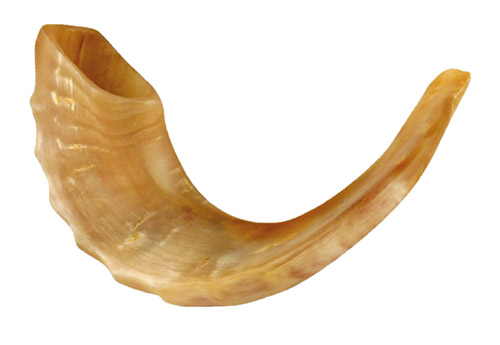
Rosh Hashanah is defined by the shofar. Not only is hearing the shofar the central mitzvah of the day, we integrate both the longer tekia blasts and the shorter teruah blasts, which includes the sounds we call the teruah, shevarim and shevarim-teruah, into the core tefillah of the day. As these sounds must be created by human lips directly touching the shofar, we might suppose that the blessing over this commandment would be “al tekiat shofar” or “l’tkoa hashofar”—thanking Hashem for giving us the mitzvah to blow the shofar, as we do for taking the lulav on Sukkot, eating matzah on Pesach and elsewhere. Instead, the bracha that we say is “l’shmoa kol shofar, to listen to the sound the shofar. Why do we change the format of the bracha and eliminate any reference to tekiat shofar?
Similarly, the Rambam defines this mitzvah at the beginning of the Laws of the Shofar as “a mitzvah to listen to the teruah of the shofar of Rosh Hashanah.” Why is the tekia not mentioned as a mitzvah, only a teruah?
As noted above, the teruah includes three different sounds—the shevarim, teruah and shevarim-teruah. This disagreement about the notes that comprise the teruah dates back to the Talmud, as retold on Rosh Hashanah 34a. Rabbi Abahu, in 4th century Caesarea, instituted the practice that all three traditions of teruah be sounded by all Jews at all times. Why was the divergence found only in the teruah, not the tekia, and why did Rabbi Abahu insist on uniform practice?
To begin answering the questions, we learn from the Aruch Hashulchan (OH 590:2), reviewing how tekia and teruah are used in the Torah, that the tekia is found in times of joy, such as offering sacrifices at the Beit Hamikdash, whereas the teruah is used in time of war. The Galya Maseches (19th Century Russia, as quoted by Rav Zevin in Moadim B’Halacha) explains that is the teruot are primary, while the tekiot play a supporting, but necessary, role. That is, the day of Rosh Hashanah is a time of war, surrounded by an atmosphere of joy.
What is the nature of this war? On Rosh Hashanah, we begin the Ten Days of Repentance, where we rage a battle within ourselves between our good and bad inclinations, the yetzer hatov and yetzer hara. Will we commit to more Torah and mitzvot this year, or be happy where we are? Will we commit to being more present for our spouses, children and parents? Will we be more careful about what we say about others, in person or behind a keyboard? These struggles are unique to each one of us, and different teruahs speak to each of the struggles individually. However, since we rely on the communal blowing of the shofar, each different type of teruah must be sounded, as all of our needs are validated. As Rav Soloveitchik taught us, the shofar is our primordial cry when we don’t have the words to express our longing for Hashem, and all of us need to cry out on Rosh Hashanah.
If the teruah represents the essence of the day, why do we need the tekia, the sound of simcha? The initial tekia announces that we are standing in front of the courtroom of Hashem, where he is judge, jury and executioner. We are awakened, brought to attention and told to focus on what really matters in life. Intermixed with the fear of judgment, we feel the joy of standing before Hashem.
The tekia after the teruah is a reminder of the shofar that we heard on Mount Sinai when Hashem gave us the Torah. In Taanit 26b, the Talmud compares the day the Torah was given to a wedding day, a time of ultimate simcha, when Hashem gave us the cure to our ills, even before we knew what we needed.
The Talmud refers to the tekia as pashuta—straightforward, laid out for all to see. While the struggles found in the teruah are only known to oneself, with the tekia we stand before Hashem together as a community, and as a community we can improve together through the Torah.
We can also answer the Aruch Hashulchan’s question in 590:5: For the shofar-blowing before Musaf, why can’t we use the last tekia of one set of blasts as the first tekia of the next set of blasts? Since each set of blasts uses a different type of teruah, and only one is the correct one, then either the last tekia of one set or the first tekia of the next set is not being used to fulfill a mitzvah, so we should only really need one of them. However, now that all of the different teruahs have been sanctified by the Jewish people as authentic cries, and the tekia before and after the teruah serve different purposes, both tekias are necessary to properly fulfill the mitzvah in our day.
May Hashem give us the wisdom to understand what our teruahs are and help us find a way forward through the sound of the tekia.
Hesh Luber lives in Teaneck with his wife and family and wishes everyone a ketiva v’chatima tova.










